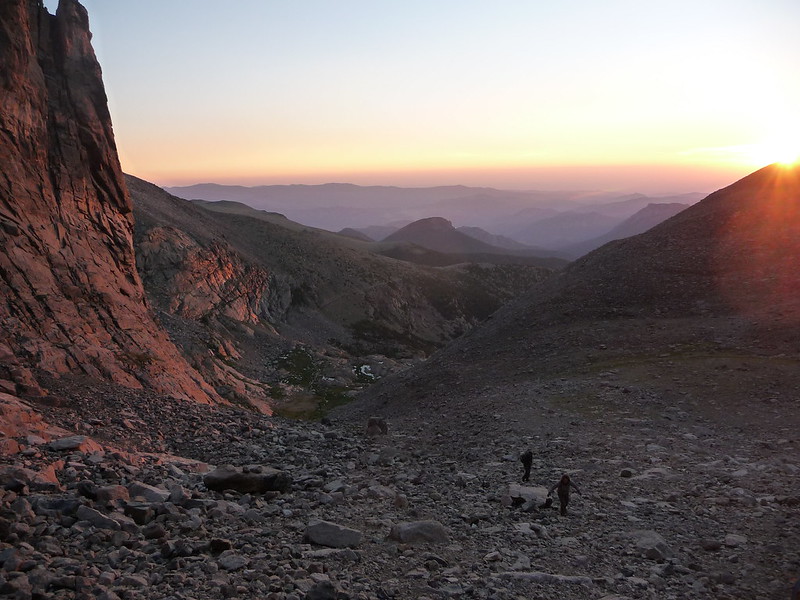
Sunrise on the Loft, Longs Peak, Rocky Mountain National Park.
Credit: Ryan Carpenter/NPS CC BY-ND
AGU News
WaterSciCon press registration open
Registration is open for the Water Science Conference, a collaboration of AGU and the Consortium of Universities for the Advancement of Hydrologic Science, Inc. (CUAHSI) convening 24-27 June in Saint Paul, Minnesota. The program features the confluence of science, policy and community and sessions coupling research to applied workshops. Interested reporters and press officers should email [email protected] with credentials. [press information][scientific program][eligibility]
Featured Research
Rockies and Ethiopian Highlands most vulnerable to high elevation drying trend
The air and soil of most mountain ranges worldwide have dried significantly since the 1970s due to warming temperatures and shifting precipitation patterns driven by climate change. The Rocky Mountains and Ethiopian Highlands have seen the most critical drying, with both atmospheric and soil aridity increasing by 13% across all elevation gradients. [Earth’s Future research]
More frequent winter warm spells threaten snowpack in western US and Canada
In western North American, warms spells —three or more days of unseasonably warm temperature highs — account for 49% of snow loss in winter. The loss occurs during a small window of time, only 0.6 days on average. But climate change is projected to make winter warm spell three times more frequent in humid regions, increasing snow loss by 147%, and stressing water supplies for many communities. [Water Resources Research]
Low carbon emission pathway halves future anthropogenic mercury pollution
Burning fossil fuels, especially coal, releases mercury, a toxin with severe health consequences for people and wildlife. High carbon emissions scenarios release mercury at present-day levels through 2060. On the low emissions pathway, the mercury peak will come at 2030 and decline faster. The cost of delay is compounded by re-emission of mercury deposited on land and in oceans. [Earth’s Future research]
Nature-based carbon removal strategies most popular, least effective
To achieve net zero carbon, countries will need to remove carbon dioxide that has already been released to the atmosphere. German researchers assessed 14 carbon removal options for technological, legal and institutional readiness, economic and environmental impact, and public perception. Removal potential is small compared to the size of the problem, underlining the need to reel back emissions now. [Earth’s Future research]
Red-light-loving bacteria could expand the search for life
Most stars in our galaxy are red dwarfs, which emit far-red light. Whether they can fuel significant oxygen-generating photosynthesis is unknown. Scientists are uncovering genes responsible for oxygenic photosynthesis in cyanobacteria to shift the search for potentially habitable worlds. [Eos news highlight][Astrobiology Science Conference abstract]
###